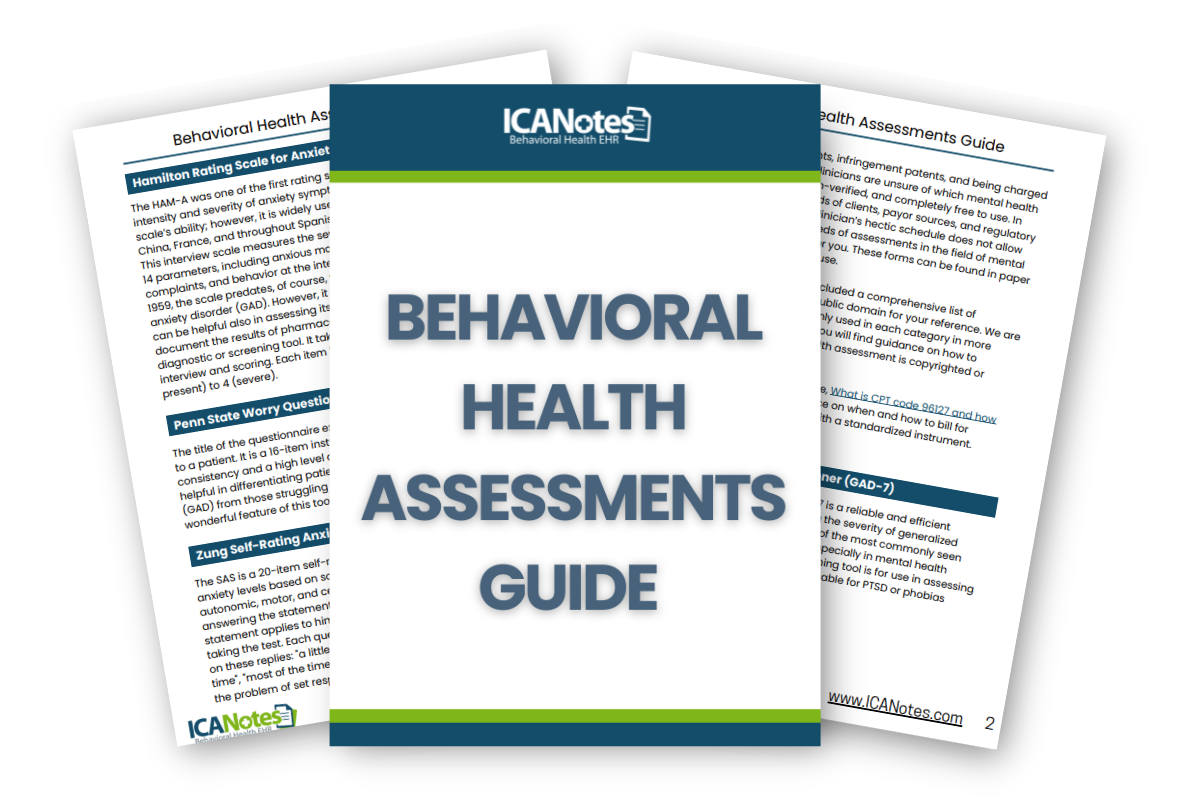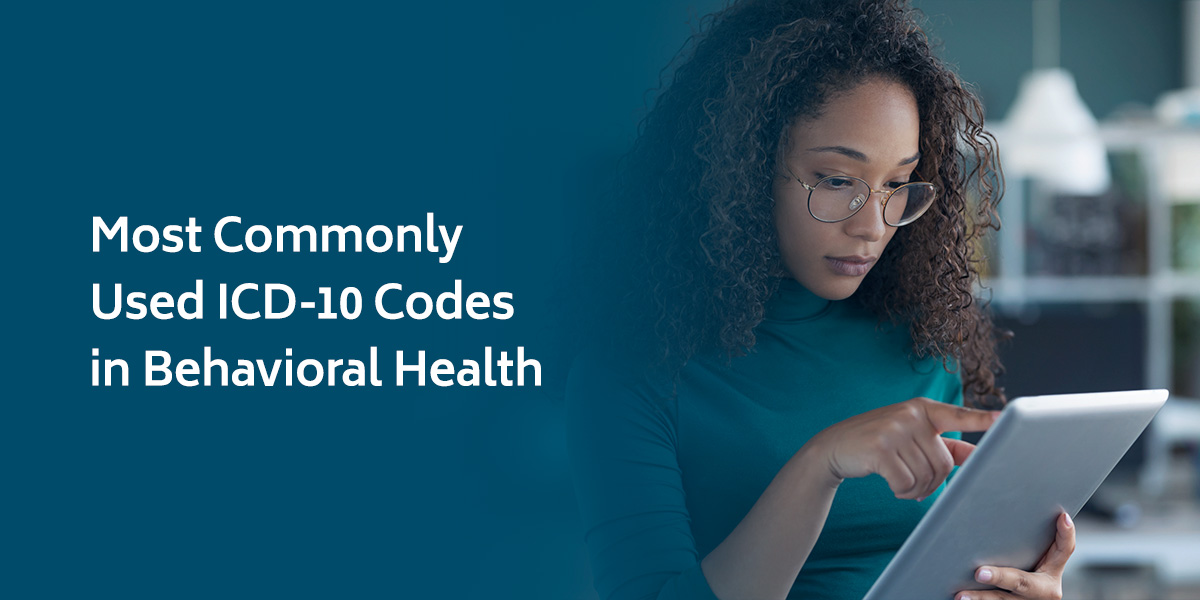CPT Code 96127: Billing, Documentation & Reimbursement Guide for Mental Health (2025)
CPT code 96127 is a brief behavioral/emotional assessment code used when you administer a standardized instrument, score it, and document results and the plan. Clinicians use 96127 across mental health and primary care to screen for depression, anxiety, substance use, ADHD, and suicidality, often alongside an E/M or psychotherapy visit. Correct billing, tight documentation requirements, and payer-specific guidelines are crucial for accurate reimbursement and clean claim rates.

Last Updated: August 25, 2025

What is CPT Code 96127?
Mental health screening is one of the simplest ways to improve clinical decision-making and patient outcomes, yet it’s also a common source of small, preventable claim errors. CPT code 96127 exists to capture the work of administering a brief, standardized behavioral or emotional assessment, scoring it, and documenting clinically useful findings in the medical record. Because 96127 is billed per instrument, the code fits naturally into visits where you use more than one validated tool (for example, a PHQ-9 plus an AUDIT-C) so long as your documentation supports medical necessity and your payer allows multiple units.
What 96127 Covers and When to Use It
CPT defines 96127 as a brief emotional/behavioral assessment with scoring and documentation, per standardized instrument. In practice, that includes common tools such as PHQ-9/PHQ-2, GAD-7/GAD-2, AUDIT/AUDIT-C, DAST-10, CRAFFT, PSC, SDQ, Vanderbilt, EPDS, and screening versions of C-SSRS—used to triage, to monitor progress, or to inform the plan of care. If you administer and score the instrument and include the essentials in your note (instrument, score, interpretation, and action), 96127 is generally reportable in addition to the day’s E/M or other service when plan rules are met.
Real-world examples:
- Adolescent well-visit: PHQ-9A + CRAFFT administered, scored, and documented → 2 units of 96127 in addition to the preventive visit.
- Therapy session check-in: GAD-7 or PHQ-9 used to monitor symptoms with clear scoring and interpretation → 1 unit of 96127 with the day’s psychotherapy code (payer-dependent pairing).
- Primary care follow-up: AUDIT-C for alcohol risk and PHQ-9 for depression → 2 units of 96127 with the E/M service when documentation supports it.
Each scenario can support 96127 as long as the services are distinct from any bundled preventive benefit and your payer’s units-per-day limit isn’t exceeded.
Who Can Bill 96127?
Physicians and other qualified health care professionals may report 96127 when the service falls within their scope and the plan recognizes their provider type. Clinical psychologists are commonly eligible; coverage for LCSWs, LMFTs, and LPCs varies by state scope and payer enrollment rules. Non-billing staff may help administer or score a tool, but the billing provider must review results, interpret them, and incorporate a plan in the record. Always confirm eligibility in your contracts and, for Medicare, with your local MAC.
What is the Average Reimbursement for CPT Code 96127?
The average reimbursement for CPT Code 96127 is typically about $4 to $7 per assessment, but varies depending on the insurer.
-
Medicare: The 2025 standard reimbursement rate for CPT 96127 is about $4.53 per assessment. Past years have had similar rates, and most Medicare contractors set this value as the baseline.
-
Private Insurance: Rates may be higher and usually fall anywhere from $4 to $15 per assessment, depending on the specific plan and region.
-
Medicaid: Rates, when available, may vary further by state, sometimes ranging up to $10 per assessment.
Healthcare organizations should confirm rates with specific insurers, as contract negotiations could result in higher or lower payments.
Documentation Requirements for 96127
Here is a checklist of the items that should be in your clinical note when using CPT Code 96127:
- Instrument name (e.g., PHQ-9) and who completed it (patient, caregiver, technician, self-administered).
- Date/time administered and scoring method (auto-score, manual).
- Score + interpretation (e.g., “PHQ-9 = 15, moderate depression”).
- Clinical action/plan (e.g., safety plan, referral, med adjustment, follow-up interval).
- Provider review/communication of results with the patient (brief statement is fine).
- Credentials of administering/scoring staff if not self-administered.
- If billed with an E/M, some payers require modifier-25 on the E/M to denote a distinct service.
Payers deny 96127 most often because the chart lacks one of four elements: the instrument name, the score, the clinical interpretation, or the action/plan. Your note should also indicate who completed the instrument and when/how it was administered (paper, portal, in-room). If the screen is performed alongside an E/M visit, some plans want modifier-25 on the E/M to make clear the visit remains separately identifiable. Building these prompts into your templates greatly reduces rework.
How many units of 96127 can I bill?
Because 96127 is per instrument, multiple validated tools on the same date of service can support multiple units. That said, Medicare and many commercial/Medicaid plans apply Medically Unlikely Edits (MUEs) or plan-specific caps, often two to four units per day. One Medicaid managed-care example caps 96127 at four instruments per day. Medicare allows up to 3 units per patient, per date of service. Private insurance limits may differ, so verifying with each payer is always recommended. Configure payer-specific guardrails so staff can’t accidentally overshoot the limit. Submit multiple units on a single line when required; follow plan rules for modifiers.
What standardized screening tools can be billed under 96127?
The tool must be validated/standardized, scored, and documented.
FREE DOWNLOAD
Use mental health assessment CPT code 96127 to bill for these assessment tools available in the public domain

Common Claim Denials for 96127 (and how to prevent them)
Most 96127 denials trace to fixable issues: exceeding unit caps, missing a score or interpretation, using 96127 instead of G0444 during a Medicare AWV, omitting modifier-25 on the E/M when required, or billing under an ineligible provider type. Tight templates, payer-specific unit limits, and a quick pre-submission edit will prevent the vast majority of write-offs here.
- Exceeded unit cap per DOS → Add payer-specific unit limits to your EHR rules (e.g., 2–4/DOS).
- No standardized instrument or no score → Document instrument, score, interpretation, plan, and provider review every time.
- Wrong code at AWV → Bill G0444 for the annual Medicare depression benefit instead of 96127.
- Missing modifier-25 on same-day E/M → Add modifier-25 to the E/M when policy requires.
- Ineligible provider type → Confirm enrollment, scope, and plan policy (especially for LCSW/LMFT/LPC).
ICD-10 Codes to Pair with 96127
When the purpose of the encounter is screening, pair 96127 with Z13.31 (depression), Z13.39 (other mental/behavioral), or Z13.30 (unspecified). If the screen is positive, add the appropriate F-code (for example, F32.1). This small detail—distinguishing screening intent from diagnosis—is one of the easiest ways to avoid payer confusion and downstream denials. (Keep in mind that other diagnoses related to the visit may also appear on the claim.)
Can I bill 96127 via Telehealth?
Telehealth remains widely covered through 2025 under current federal flexibilities, but whether 96127 itself is payable via telehealth depends on whether the code appears on the CMS Telehealth Services List and on your plan’s POS/modifier rules (for example, POS 10/02 and modifier 95, when required). If a patient completes the instrument remotely, your note should capture method, timing, provider review, and discussion. Always verify the code’s current status on the CMS list before billing.
Is 96127 reimbursed by Medicare, Medicaid, and commercial payers?
- Medicare: Generally reimbursable at a low per-unit rate; check the MPFS for your locality.
- Medicaid: Commonly covered for EPSDT and behavioral health, but state rules vary.
- Commercial: Most plans reimburse 96127 when documentation requirements are met; units per day and pairing rules differ by contract.
How Does 96127 Differ From Related Screening Codes?
Think of 96127 as the behavioral/emotional brief assessment code used per instrument. In contrast, G0444 is the Medicare annual depression screening during the preventive benefit; 96110 addresses developmental screening in pediatrics; and 96160/96161 cover general health risk assessments (patient- or caregiver-focused) when a payer directs HRAs away from 96127. Using the right code in the right context prevents avoidable recoups
Can I Bill 96127 on the Same Day as E/M, Psychotherapy, or AWV?
Most plans allow 96127 to be reported with office E/M on the same date when your note supports distinct work; again, some require modifier-25 on the E/M. When the visit is a Medicare Annual Wellness Visit, depression screening belongs under G0444 rather than 96127 if you’re delivering the covered annual screening benefit. Pairing with psychotherapy is payer-specific: some plans bundle it, others allow it when clearly separate. Check current NCCI edits and contract language.
Implementation: Adding 96127 Workflows to your EHR
Operationalizing 96127 is straightforward: load validated instruments with auto-scoring; add a “Behavioral Screening” block that automatically captures instrument, score, interpretation, and plan; map tools to units per instrument with payer caps; and include ICD-10 helpers that suggest Z-codes for screening and F-codes when results are positive. If you screen remotely, make sure your telehealth configuration adds the correct POS/modifiers and stamps the encounter with who/when/how the instrument was completed. (ICANotes supports these workflows out of the box.)
- Load standardized assessments with auto-scoring (PHQ-9, GAD-7, AUDIT-C, DAST-10, PSC/SDQ, Vanderbilt, EPDS, C-SSRS screen).
- Surface interpretation bands and cut-offs; trigger alerts (e.g., suicidality).
- Add a Behavioral Screening template block (instrument, score, interpretation, action/plan, and credentials).
- Map tools to CPT 96127 (unit = per instrument); nudge for modifier-25 with E/M; cap units by payer.
- Prompt Z13.31/Z13.39 for screening and F-codes when positive.
- Set telehealth POS/modifiers and maintain audit trails for remote completion.
FAQs: CPT Code 96127

Optimize 96127 with ICANotes
ICANotes streamlines brief screenings with more than 100 built-in standardized assessments. Assessments are filled out electronically via the portal or by the clinician directly in the EHR. The assessments score automatically and the score is inserted into the clinical note and tracked on the rating scales log. Start a free trial to see how easy accurate screening and billing can be.
Start Your 30-Day Free Trial
Experience the most intuitive, clinically robust EHR designed for behavioral health professionals, built to streamline documentation, improve compliance, and enhance patient care.
- Complete Notes in Minutes - Purpose-built for behavioral health charting
- Always Audit-Ready – Structured documentation that meets payer requirements
- Keep Your Schedule Full – Automated reminders reduce costly no-shows
- Engage Clients Seamlessly – Secure portal for forms, messages, and payments
- HIPAA-Compliant Telehealth built into your workflow
Complete Notes in Minutes – Purpose-built for behavioral health charting
Always Audit-Ready – Structured documentation that meets payer requirements
Keep Your Schedule Full – Automated reminders reduce costly no-shows
Engage Clients Seamlessly – Secure portal for forms, messages, and payments
HIPAA-Compliant Telehealth built into your workflow
Related Posts
Fatima C. Davis is the RCM Manager at ICANotes and a seasoned expert in behavioral health revenue cycle management. With over 20 years of experience, she specializes in optimizing collections, reducing denials, and ensuring compliance across diverse payer landscapes. Fatima has led RCM operations for large multi-agency systems and is passionate about helping behavioral health practices achieve financial sustainability.








